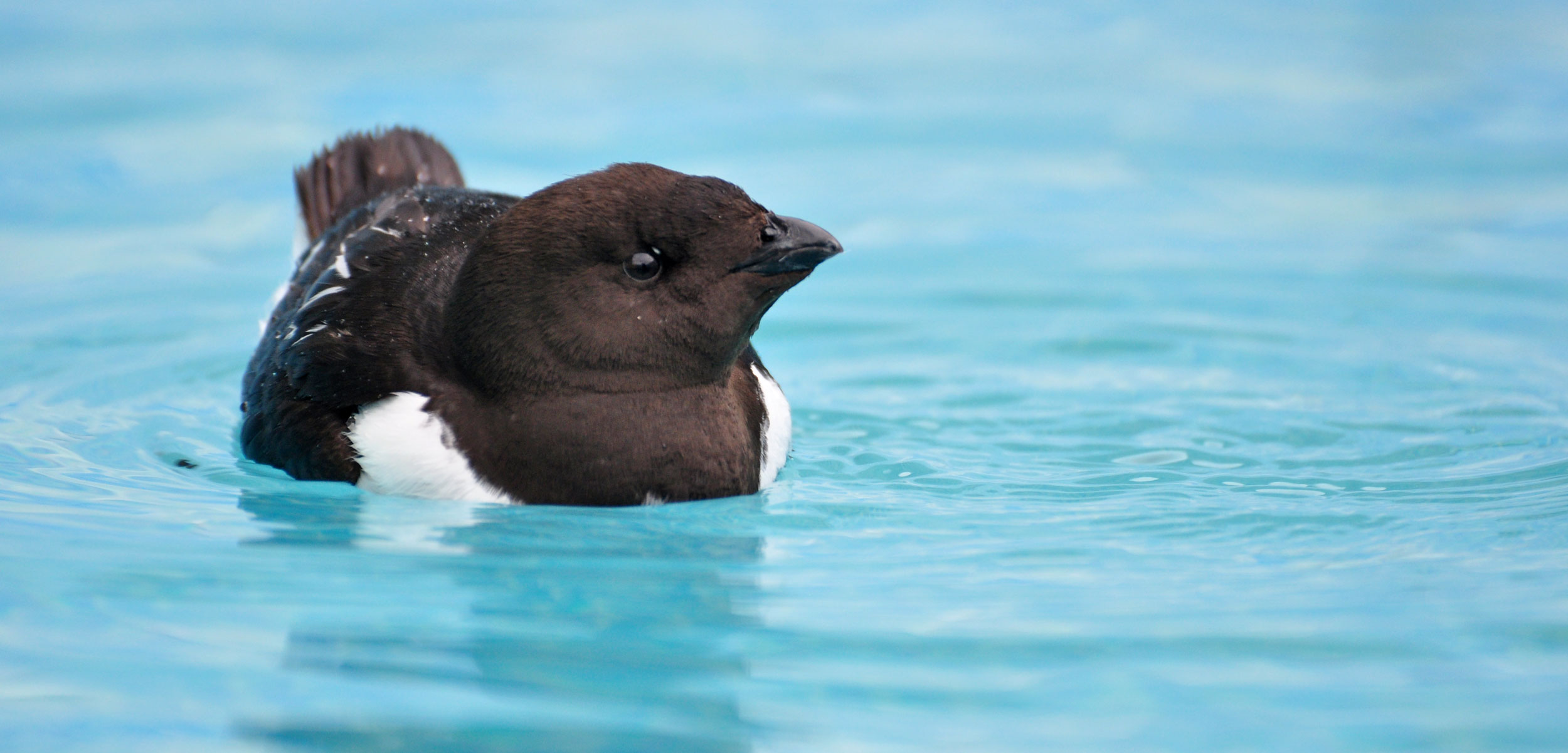Little Auks Suck
Slow-motion video reveals the secret to a seabird’s slurping skills.
Article body copy
The little auk, a stout black-and-white seabird that breeds in the Arctic, dives up to 27 meters to grab a bite. Its favorite food, especially in the summer when it’s raising young, is a tiny, fast-swimming crustacean known as a copepod. And it needs to catch about 60,000 every day just to sate its appetite, and that of its developing chick.
The scientists who initially estimated the bird’s impressive daily catch rate—around six copepods per second—surmised that the auks must catch them by filter-feeding, sieving multiple prey from the water at a time.
Now, scientists have observed little auks feeding underwater up close and found no signs of filter-feeding in the tiny seabirds. Instead, little auks use a different technique to catch prey: they suck them from the water. The technique is the same used by many fish, and the discovery makes the little auk the first seabird known to hunt in this way.
To conduct the study, Manfred Enstipp, now a postdoctoral researcher at the Hubert Curien Multidisciplinary Institute in France, caught 17 little auks from the mossy and slippery mountain slopes of Svalbard, Norway. Enstipp brought the birds to a nearby research station, where he had an artificial pool of seawater spiked with little auks’ preferred food. He released the birds into the pool, hoping to study and film their feeding behavior.
But the first few birds didn’t comply. “They did not dive; they did not forage at all,” says Enstipp. “[I thought], this is not going to work.”
Then Enstipp realized that the birds were probably full. So, for his next trial, he only caught birds whose food pouch, a small cavity under the tongue, wasn’t bulging. (Incredibly, the expandable pouch can hold up to 4,300 prey.) The hungry birds obliged.
“These birds were incredibly fast underwater,” says Enstipp. If you watch the video at its original speed, he adds, it looks as if they were just bouncing around. Slowed down, however, the video reveals how little auks hunt.
The little auk’s multistep and efficient feeding technique is visible when shown in slow motion. Video by Manfred Enstipp
On spotting a copepod, the bird steers toward it. Then, it stretches out its neck, opens its beak, and expands its food pouch to suck in the copepod. By extending its food pouch, the bird creates a cavity of low pressure that draws in the copepod, along with the water. Once it closes its beak, the bird uses its fleshy tongue to push the excess water out of its nostrils or beak. Each capture event takes less than half a second.
Enstipp’s birds caught an average of 1.35 copepods per second, a drop from the previous estimate of six. But out at sea, where copepods are often available in high densities, Enstipp suspects they may be able to suck in multiple copepods instead of picking them one at a time. In the experiment, the birds often slurped two or three copepods individually before expelling the water and completing the capture, making the feeding slightly more efficient.
With warming Arctic waters though, even a daily diet of 60,000 copepods may not be enough. The copepod species that thrive in the chilly Arctic are large and energy-rich. But they are being replaced by smaller species as the sea warms, says Ruedi Nager, a seabird ecologist at the University of Glasgow in Scotland.
It seems that in a future ocean, little auks will have to up their speed-eating game as they pursue smaller, less nutritious prey, sucking it up to survive.

